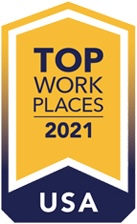Did You Know?
Of the costs associated with hiring a new employee, about 60% are estimated to be soft costs, the time leaders and managers invest in supporting the HR roles of the hiring costs.
The foundation of successful hiring lies in establishing clear, robust requirements. Defining precise needs streamlines the recruitment process and ensures the right candidates are selected, eliminating time wasted sifting through candidates who are good, not great.
Talent Acquisition: The Candidate Perspective
77% of HR professionals report difficulty recruiting for full-time positions over the past year. With 5.2 million Americans seeking jobs in June, understanding the candidate experience is essential for recruitment professionals looking to attract top talent.
Lengthy Application Processes: The average hiring process lasts three to six weeks, often consisting of multiple stages of interviews, and sometimes involving a variety of tasks. Candidates may be pursuing multiple time-sensitive opportunities, and long waits can cause candidates and companies alike to miss out on their perfect fit. Finding the ideal candidate takes time, but recruitment software, streamlined processes, and robust requirements shorten the timeline.
Lack of Communication: 81% of candidates prefer continuous communication during the hiring process, and 83% of job seekers state that having a clear timeline of the recruitment process would greatly improve their overall experience. While many companies lack the capacity to provide continuous communication with each applicant, setting a clear timeline eases the process on both ends.
Establishing Hiring Requirements: Best Practices
Establishing robust hiring requirements and practices ensures that talent acquisition professionals can easily find strong candidates and that all applicants have a positive experience with your organization’s TA department, enhancing your reputation with employees and potential talent.
Comprehensive Job Analysis: Gather detailed information about the role and identify key responsibilities, necessary qualifications, and expectations. Beyond technical skills, culture fit is key, as 89% of new hires who fail within the first 18 months do so because of culture fit issues. Consider your organization’s values and your team’s personality traits.
Skills and Qualifications: Essential vs. Desirable: When hiring, differentiate between skills that are non-negotiable competencies for the job and skills that are additional attributes that enhance a candidate’s potential. 97% of employers value soft skills as much as, or more than, hard skills, so identify essential skills in each subset.
Job Descriptions: Comprehensive job descriptions should clearly outline the role’s responsibilities, qualifications, and expectations. Many candidates also appreciate seeing information about the company’s culture, position benefits, or salary ranges to ensure the role they’re applying for matches their needs. Attract top talent with unique job postings—company branding can increase applications between 13 and 21% and postings with videos are viewed 12% more.
Training and Resources: 87% of recruiting professionals believe TA has become a more strategic function, meaning updated training may be in order. Talent acquisition professionals also need a robust set of resources, from access to job boards to applicant tracking systems. Though 50% of employers do not use an application tracking software, 78% of companies that use an ATS say recruiting technology makes their roles easier.
Ready to cut down on your soft costs, find the perfect talent, or receive assistance in establishing a strong hiring process? PuzzleHR has your back! Our TA and HR teams can manage every part of the hiring process at a fraction of the cost of hiring an in-house professional. Contact us today to learn more!


















